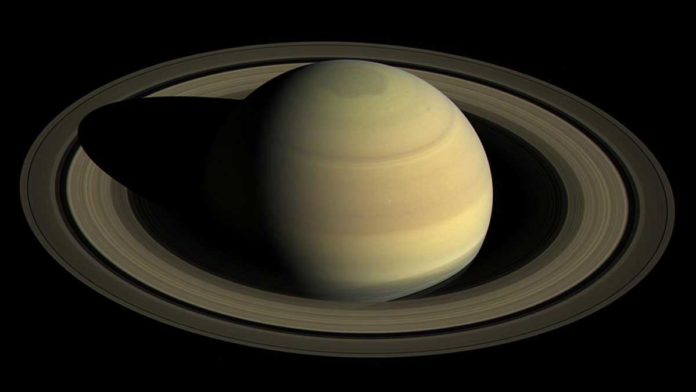Saturn is the sixth planet from the Sun and the second-largest in the Solar System, after Jupiter. This gas giant actually has no solid surface with landmarks and has an unusual magnetic field that hides the planet’s rotation.
Now, scientists used data from NASA‘s Cassini spacecraft and solved a longstanding mystery of solar system science: the length of a day on Saturn. It’s 10 hours, 33 minutes and 38 seconds.
The instruments on the spacecraft examined the icy, rocky rings in unprecedented detail. Christopher Mankovich, a graduate student in astronomy and astrophysics at UC Santa Cruz, used the data to study wave patterns within the rings.
Scientists found that the Saturn’s rings react to vibrations inside the planet itself, acting correspondingly to the seismometers used to gauge development caused by quakes. The inside of Saturn vibrates at frequencies that cause varieties in its gravitational field. The rings, thus, recognize those developments in the field.
Mankovich said, “Particles throughout the rings can’t help but feel these oscillations in the gravity field. At specific locations in the rings these oscillations catch ring particles at just the right time in their orbits to gradually build up energy, and that energy gets carried away as an observable wave.”
This study portrays how Mankovich created models of Saturn’s inside structure that would coordinate the rings’ waves. That enabled him to follow the developments of the inside of the planet – and in this way, its rotation.
The rotation rate of 10:33:38 that the analysis yielded by using Cassini is based on magnetic field data. Scientists often rely on magnetic fields to measure planets’ rotation rates. Saturn‘s unique magnetic field is nearly perfectly aligned with its rotational axis.
Thus, ring finding has been key to homing in on the length of day.
Cassini Project Scientist Linda Spilker said, “The researchers used waves in the rings to peer into Saturn’s interior, and out popped this long-sought, fundamental characteristic of the planet. And it’s a really solid result. The rings held the answer.”
